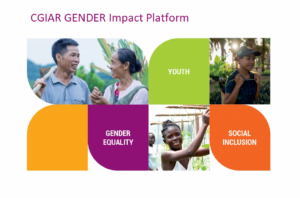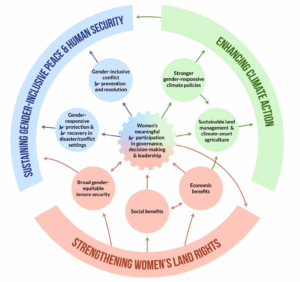This paper offers a conceptual framework for understanding the gendered pathways through which asset accumulation occurs, including attention to not only men’s and women’s assets but also those they share in joint control and ownership. Unlike previous frameworks, this model depicts the gendered dimensions of each component of the pathway in recognition of the evidence that men and women not only control, own, or dispose of assets in different ways, but also access, control, and own different kinds of assets. The framework generates gender-specific hypotheses that can be tested empirically:
- Different types of assets enable different livelihoods, with a greater stock and diversity of assets being associated with more diverse livelihoods and better well-being outcomes;
- Men and women use different types of assets to cope with different types of shocks;
- Interventions that increase men’s and women’s stock of a particular asset improve the bargaining power of the individual(s) who control that asset; and
- Interventions and policies that reduce the gender gap in assets are better able to achieve development outcomes related to food security, health, and nutrition and other aspects of well-being related to agency and empowerment.
The implications of these gender differences for designing agricultural development interventions to increase asset growth and returns to assets as well as for value chain development are discussed. Based on this analysis, additional gaps in knowledge and possible investigations to address them are identified.




